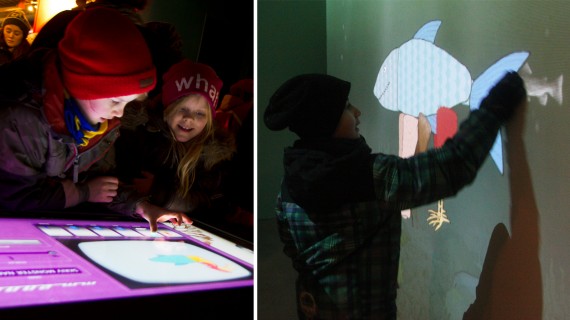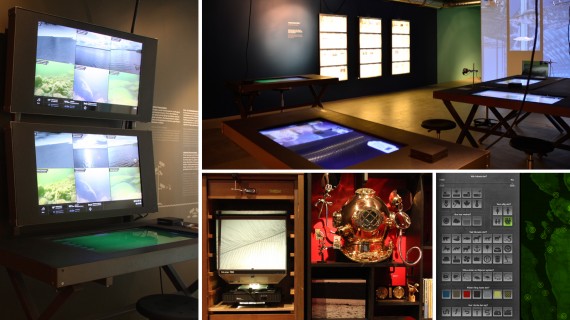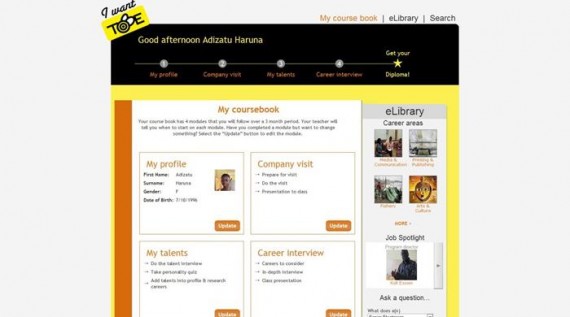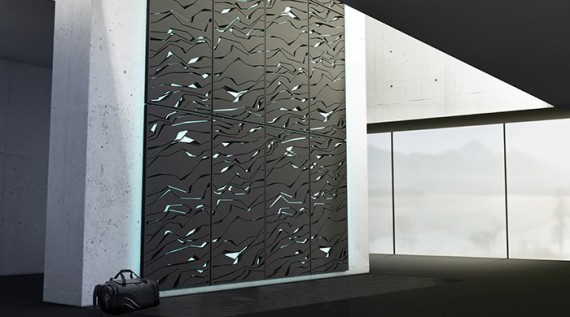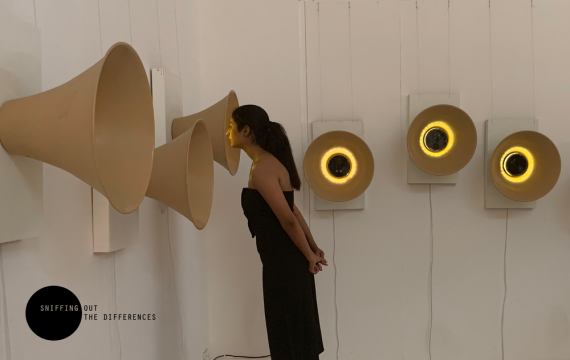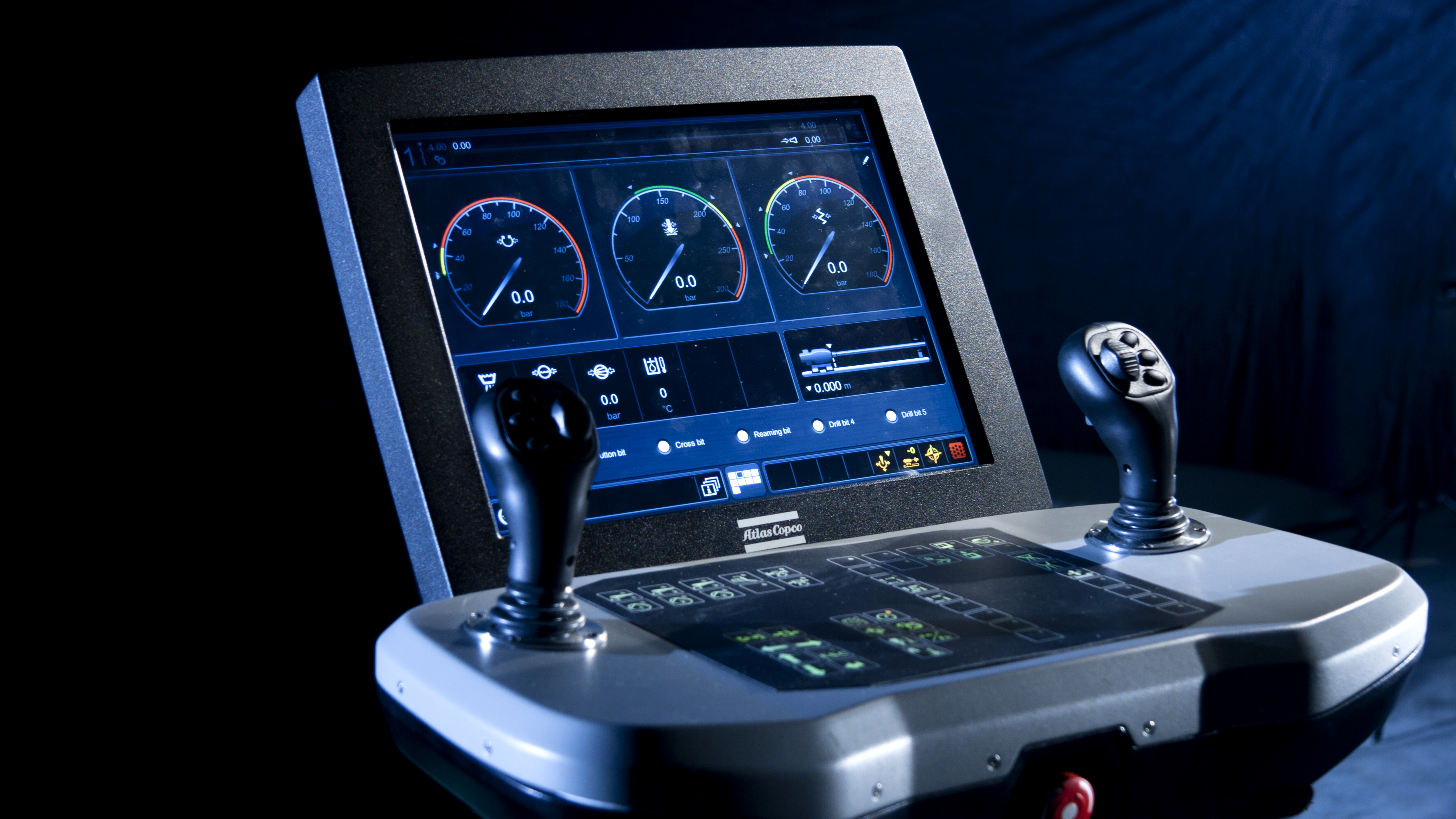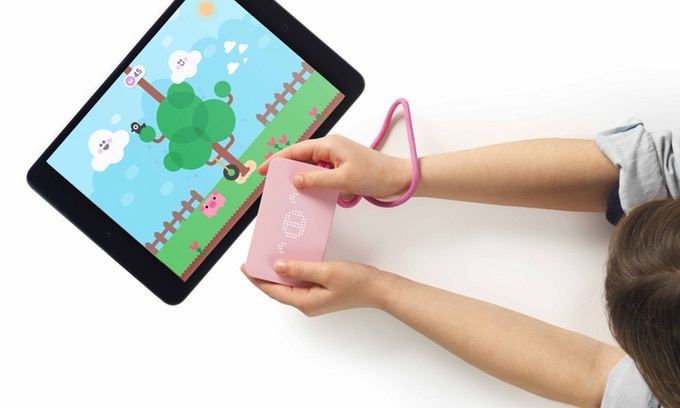Storsjöodjurscenter - an interactive monster laboratory
Team
Company | Institution
Category
Type
Project description
For centuries people around the Swedish lake Storsjön have talked about a mysterious lake monster called Storsjöodjuret. Since the 19th century hundreds of observations have been documented and there are even more unofficial testimonies. For a few years the monster was even on the Swedish list of protected species. There have been many attempts to catch or convincingly photograph the animal, but none of them have succeeded.
In 2008 a group a group of local entrepreneurs in the small village of Svenstavik tried to solve the mystery of what’s in the lake. With some funding, they installed six cameras on an islet in the lake. They hooked up the cameras to an off-the-shelf surveillance software (used in one of the local stores) and started to monitor the murky waters. The Observation Station that they set up in Svenstavik became a popular place to visit for local monster-enthusiasts. When some inexplicable, wormlike objects were recorded and posted on YouTube the world started to take an interest in Svenstavik.
In 2012 the local entrepreneurs invited Unsworn Industries to design and produce a full-fledged Monster Centre that could attract visitors and monster-researchers of all ages, with varying abilities, knowledge and opinions.
Context
The Great-Lake Monster is a very delicate issue. Most scientists say the monster couldn’t possibly exist. Still there are many people who firmly believe in the monster and others who claim to have witnessed something inexplicable in the waters.
Our challenge was to create a place which is scientific and serious, interesting and engaging for casual visitors yet comforting and inviting to eyewitnesses and believers.
The centre is targeted at a broad audience, varied not only in age, but also in how interested in or skeptical to the monster phenomena they are. We designed the centre to be a neutral source of often conflicting facts, eyewitness accounts and hypotheses. The centre is a place where you can make up your own mind.
Because the majority of visitors are touristing families, we wanted to provide all the family members something interesting and rewarding to do. At the centre there are plush toys, a huge snake and a monster-maker for the younger visitors and interactive research stations for the older.
To make sure that the visitors could make sense of and use the various stations, we conducted user tests with people of different ages, interests and skills throughout the project.
Impact
Storsjöodjurscenter was designed to be highly interactive (on many levels), invite participation and conversations and leave ample room for individual explorations. We specifically didn’t want to create a museum, but a living lab which could become a place to meet, work together and come up with and share new hypotheses. We wanted people to independently interact with and make sense of the many facts and mysteries surrounding the monster. We wanted the centre to be a bridge between the realms of the fantastic and the factual and give rise to inspiring doubt and fascination. We wanted to create a space for believers and skeptics.
We think we have succeeded! Even though the centre is compact in size, the average length of a visit sometimes lasts for more than an hour. The visitors thoroughly study the contents, read articles, compare materials, try to look for patterns and formulate their own explanations.
From visitor polls we have learned that most visitors are very happy with their visit and that many of them regularly revisit the centre.
Storsjöodjurscenter has gained a fair amount of attention and praise and other museums see it as an inspiring example to learn from.
Craft
We have designed every detail of the centre to make the visitors feel like Monster Researchers visiting their own research lab. The visitors hang their coats next to diving gear, coffee is served in laboratory beakers, and staff keep an ever watchful eye on the Surveillance Station. To emphasize the interactive, participatory nature of the centre the visitors are invited to touch and use everything that they find at the centre.
Instead of tickets, the centre sells membership cards, enabled with NFC tags. Visitors use their cards to log in to the research stations and store personal research materials. They also use them to brag when they get home.
The center is actively looking for the monster. The Surveillance Station give the Monster Researchers a good overview of the live video streams from the lake and easy access to the archived footage. Hanging next to it are detailed instructions for what to do should the cameras catch the monster.
The Research Stations provide access to the Monster Researchers’ shared and annotated database in which there is a myriad articles, scientific facts, illustrated descriptions of animals and cryptozoological creatures, and more than 200 documented observations of the monster.
In 2008 a group a group of local entrepreneurs in the small village of Svenstavik tried to solve the mystery of what’s in the lake. With some funding, they installed six cameras on an islet in the lake. They hooked up the cameras to an off-the-shelf surveillance software (used in one of the local stores) and started to monitor the murky waters. The Observation Station that they set up in Svenstavik became a popular place to visit for local monster-enthusiasts. When some inexplicable, wormlike objects were recorded and posted on YouTube the world started to take an interest in Svenstavik.
In 2012 the local entrepreneurs invited Unsworn Industries to design and produce a full-fledged Monster Centre that could attract visitors and monster-researchers of all ages, with varying abilities, knowledge and opinions.
Context
The Great-Lake Monster is a very delicate issue. Most scientists say the monster couldn’t possibly exist. Still there are many people who firmly believe in the monster and others who claim to have witnessed something inexplicable in the waters.
Our challenge was to create a place which is scientific and serious, interesting and engaging for casual visitors yet comforting and inviting to eyewitnesses and believers.
The centre is targeted at a broad audience, varied not only in age, but also in how interested in or skeptical to the monster phenomena they are. We designed the centre to be a neutral source of often conflicting facts, eyewitness accounts and hypotheses. The centre is a place where you can make up your own mind.
Because the majority of visitors are touristing families, we wanted to provide all the family members something interesting and rewarding to do. At the centre there are plush toys, a huge snake and a monster-maker for the younger visitors and interactive research stations for the older.
To make sure that the visitors could make sense of and use the various stations, we conducted user tests with people of different ages, interests and skills throughout the project.
Impact
Storsjöodjurscenter was designed to be highly interactive (on many levels), invite participation and conversations and leave ample room for individual explorations. We specifically didn’t want to create a museum, but a living lab which could become a place to meet, work together and come up with and share new hypotheses. We wanted people to independently interact with and make sense of the many facts and mysteries surrounding the monster. We wanted the centre to be a bridge between the realms of the fantastic and the factual and give rise to inspiring doubt and fascination. We wanted to create a space for believers and skeptics.
We think we have succeeded! Even though the centre is compact in size, the average length of a visit sometimes lasts for more than an hour. The visitors thoroughly study the contents, read articles, compare materials, try to look for patterns and formulate their own explanations.
From visitor polls we have learned that most visitors are very happy with their visit and that many of them regularly revisit the centre.
Storsjöodjurscenter has gained a fair amount of attention and praise and other museums see it as an inspiring example to learn from.
Craft
We have designed every detail of the centre to make the visitors feel like Monster Researchers visiting their own research lab. The visitors hang their coats next to diving gear, coffee is served in laboratory beakers, and staff keep an ever watchful eye on the Surveillance Station. To emphasize the interactive, participatory nature of the centre the visitors are invited to touch and use everything that they find at the centre.
Instead of tickets, the centre sells membership cards, enabled with NFC tags. Visitors use their cards to log in to the research stations and store personal research materials. They also use them to brag when they get home.
The center is actively looking for the monster. The Surveillance Station give the Monster Researchers a good overview of the live video streams from the lake and easy access to the archived footage. Hanging next to it are detailed instructions for what to do should the cameras catch the monster.
The Research Stations provide access to the Monster Researchers’ shared and annotated database in which there is a myriad articles, scientific facts, illustrated descriptions of animals and cryptozoological creatures, and more than 200 documented observations of the monster.

